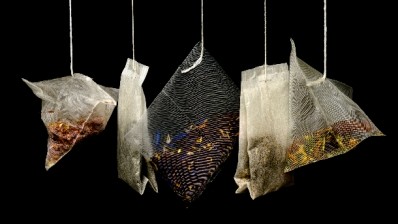Iced coffee is more popular than hot coffee in summer
Iced coffee is a great summer drink with adult appeal, but there's only one way to make this refreshing classic
Coffee-chains churn out gallons of the stuff during the hot weather. In fact, during the summer months, the major coffeehouses serve more iced drinks than hot. But while there may be a burgeoning market for chilled caffeinated drinks topped with whipped cream, connoisseurs of iced coffee maintain the ‘real thing' is a different experience entirely.
"Iced coffee has been defined recently by the frappé sold in coffee chains," says Jeremy Torz, Roastmaster for Union Hand- Roasted Coffee. "These are often made with premix, or ice-cream and involve about a pint of cold milk. I would say the frappé is to iced coffee what the hazelnut cappuccino is to speciality coffees.
Real iced coffee is much more of an adult drink."
Iced coffee is thought to have evolved from a 1920s French concoction of cold water and seltzer water called mazagran.
And, true to its roots, the ‘adult' iced coffee as defined by coffee connoisseurs is markedly different from the highly sweetened milky frappé. The real thing is simply quality coffee served extremely cold, without milk or sugar, which would detract from the clean flavours of the brew.
With this in mind, if you're planning to serve iced coffee, there are a few basic principles. Firstly, never pour hot coffee over ice.
Iced coffee is a great summer drink with adult appeal, but there's only one way to make this refreshing classic Not only will the resulting drink be too warm, but the coffee will be diluted beyond recognition.
Secondly, if your blend matters for a hot brew, it is paramount for iced coffee. "Espresso puts coffee under the microscope, and the same is true for iced coffee," says Jeremy Torz. "At this temperature you need to use a light-bodied blend with lots of acidity and citrus notes, which are enhanced by chilling – so a blend from East Africa or Mexico is perfect." Conversely, muddy earthy flavours of cheaper coffees also come to the fore in chilled versions, and can make average coffee taste awful. So if you're going to serve iced coffee, source a quality blend.
Once you've perfected your iced-coffee, the next step is selling plenty of it. And while coffee-chains might produce the kind of caffeinated milkshakes which coffee-lovers sneer at, they have undoubtedly given the iced coffee genre a real boost. "Chains have definitely made the idea of cold coffee more widely accepted," says Amir Chen of French café Apostrophe. "I think there are still two distinct customer bases – those who like coffee and those who like sweet, milk-based drinks. But people come in now and ask specifically for iced coffee, which I doubt they would have done two years ago."
Restaurateurs considering putting iced coffee on the menu will also be pleased to note the ever growing market for adult soft drinks. According to Mintel this category has grown by 84 per cent since 2000 and shows no signs of abating. And as consumers look for increasingly sophisticated non-alcoholic options, iced coffee presents an ideal addition to summer drinks menus. "It's a perfect summer drink," says Amir. "Enclosed restaurants with air conditioning might find customers less likely to want chilled coffee. But for those with lots of natural light or who have outdoor seating it should sell very well."
With summer already upon us, restaurants are well-placed to start chilling-down and serving-up. You only need a coffee-maker and a freezer to get started. So turn on, pour in, and chill out.
How to make
Three steps to ice-cold coffee perfection Serving a perfect iced coffee presents a logistic dilemma. How can one serve super-chilled fresh coffee without adding ice or allowing the brew to go stale through refrigeration? The most practical method is to use a cocktail shaker to briskly chill the coffee before adding to a chilled glass with extra ice. But those with a real yen for overachieving can make their own coffee ice-cubes.
Here's how:
- Prepare fresh brewed filter coffee (avoid using a cafetière which can leave sediment) and freeze in ice-cube trays.
- Fill a glass with the coffee ice cubes.
- Pull a double-shot of top-quality espresso and pour over the ice.
- Serve.














